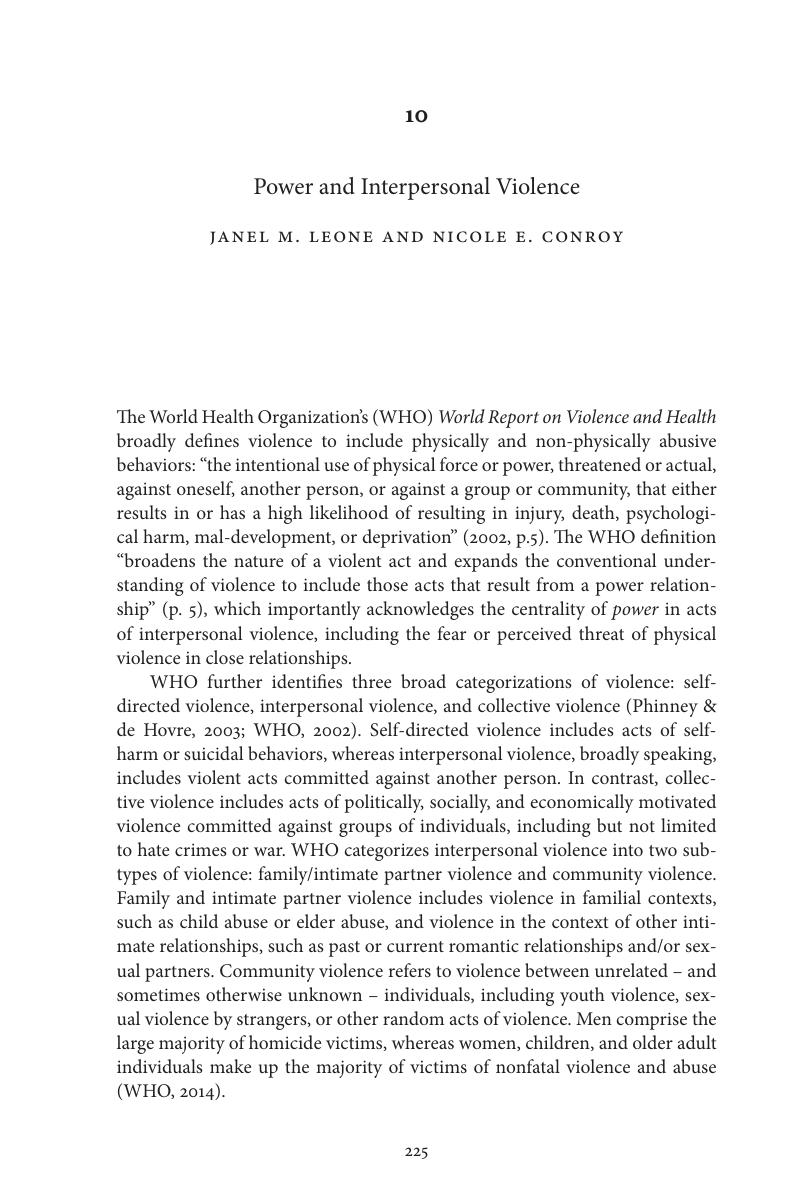Book contents
- Power in Close Relationships
- Advances in Personal Relationships
- Power in Close Relationships
- Copyright page
- Contents
- Figures
- Tables
- Contributors
- Acknowledgments
- Introduction: Power in Close Relationships
- Part I Power in Close Relationships: Theoretical Perspectives
- Part II Power in Close Relationships: Interpersonal Contexts
- 7 Power in Families
- 8 When Sex is Power
- 9 Power in Close Intimate Relationships
- 10 Power and Interpersonal Violence
- 11 Power and Interpersonal Communication
- 12 Interpersonal Power and Nonverbal Communication
- Index
- References
10 - Power and Interpersonal Violence
from Part II - Power in Close Relationships: Interpersonal Contexts
Published online by Cambridge University Press: 19 February 2019
- Power in Close Relationships
- Advances in Personal Relationships
- Power in Close Relationships
- Copyright page
- Contents
- Figures
- Tables
- Contributors
- Acknowledgments
- Introduction: Power in Close Relationships
- Part I Power in Close Relationships: Theoretical Perspectives
- Part II Power in Close Relationships: Interpersonal Contexts
- 7 Power in Families
- 8 When Sex is Power
- 9 Power in Close Intimate Relationships
- 10 Power and Interpersonal Violence
- 11 Power and Interpersonal Communication
- 12 Interpersonal Power and Nonverbal Communication
- Index
- References
Summary

- Type
- Chapter
- Information
- Power in Close Relationships , pp. 225 - 240Publisher: Cambridge University PressPrint publication year: 2019

